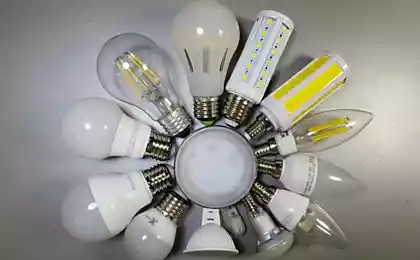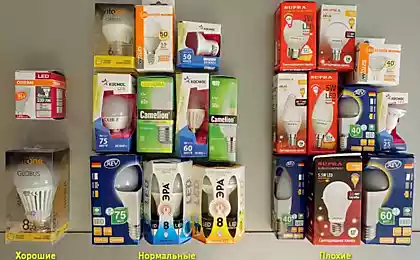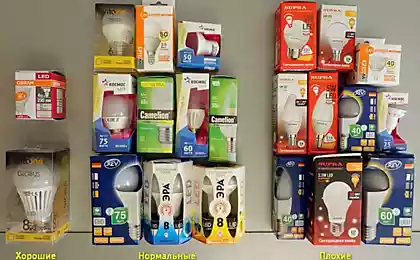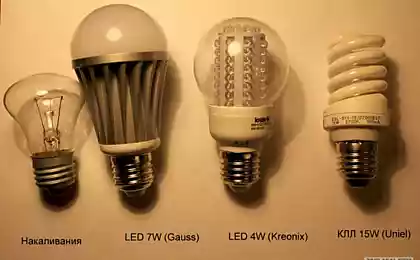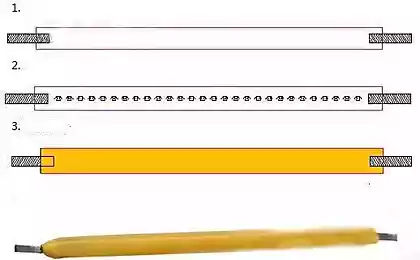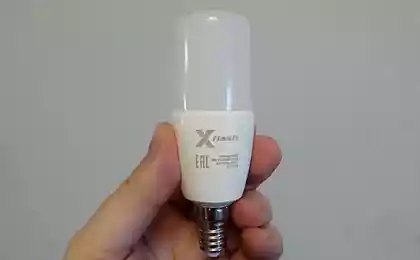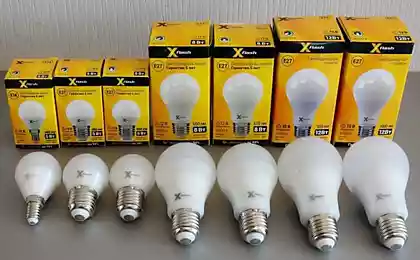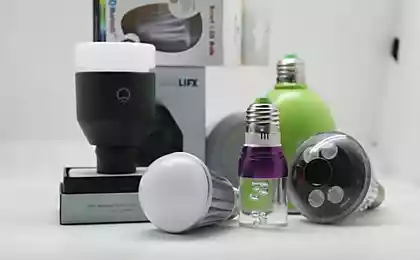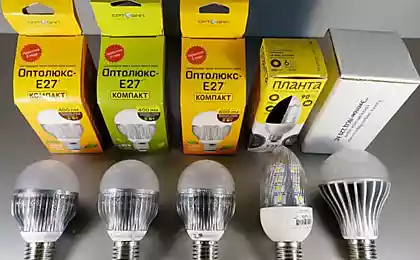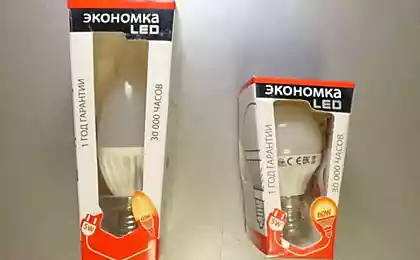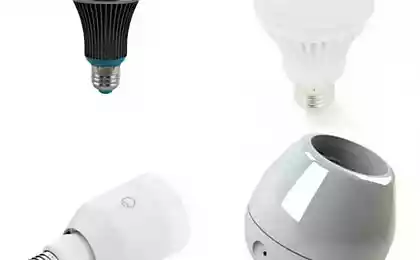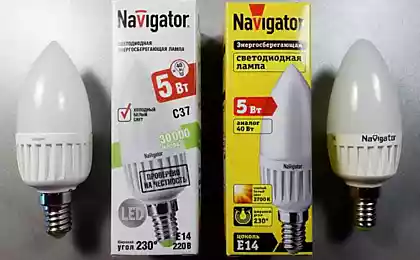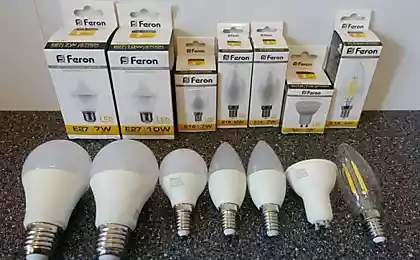469
Led bulbs: we are trying to deal with the equivalent
Most buyers of led lamps is focused by equivalent incandescent lamps. They know how Shine 40 - 60 - or 95-watt bulb and pick up led bulbs on this basis. And then the miracles begin. All manufacturers indicate quite different values are equivalent. On lamptest.ru data is collected already more than 500 led lights and the picture looks very funny.
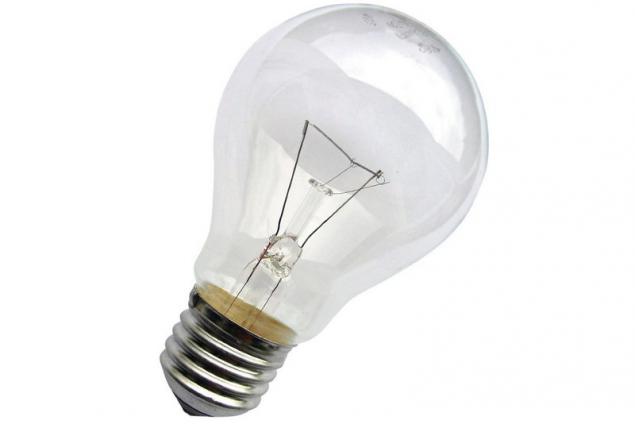
For ordinary light-pears manufacturers specify the equivalent of 60 watts with the values of flux: 450, 500, 510, 525, 530, 540, 560, 570, 580, 600, 620, 630, 650, 680, 700, 720, 807 LM. A good run is almost two times!
For "candles" is still fun. Manufacturers specify the equivalent of 40 watts for the light flux from 250 to 480 LM.
If you take, for example, a luminous flux of 470 LM, you can see that different manufacturers specify for him the equivalent of 40, 45, 60 or 75 watts.
Notice that it is not measured value, but the data that manufacturers of lead on the packaging of lamps.
So where is the truth? And what is the line flux, and equivalent is true?
It would seem a simple task is not simple. I measured the parameters of several tens of filament lamps and came to the following conclusions:
1. The luminous flux of incandescent lamps is highly dependent on voltage. For example, OSRAM lamp 60 W 710 LM gives specified on its packaging, at a voltage of 230 V and at a voltage of 220 V it only gives 616 LM.
2. The vast majority of incandescent lamps of all brands even at nominal voltage 230 V give a considerably lower luminous flux than indicated by the manufacturer. For example, lamp GE Classic A50/60W-230V-F-E27 At 230V gives a total of 556 LM, and Philips A55 frosted E27 ES 60W 230V — 614 LM, although both lamps specified luminous flux 710 LM.
3. The dependence of light output on the power consumption is very different in different types of lamps. For pears, candles and bulbs acting the ratio 9-14 LM/W, mirrored lamps R39, R50, R63 6.4-7.7 LM/W, spots GU10 and GU5.3 — 6-9 LM/W, mikrolamp G4 and G9 — 9.2-10.3 LM/W.
4. Across incandescent, working with purecalm. These lamps provide more light than stated but will not last long. They can be easily identified by the color temperature, much higher than stated.
There are several standards for the determination of the equivalent, but they are far from reality. For example, in one of the European standards it is considered that 60 watts is 806 Lumens, that's just not one 60-watt bulb will never give so much light in the real world.
I think the equivalent should be determined based on the conditions as close to real. Standard we have a network of 230 volts, but in most homes the voltage is closer to 220 V. Buying led lamps, we want to replace their incandescent bulbs, which are sold in stores, but not the perfect bulb, giving it as much light as written on the packaging, which buy are unlikely to succeed. Therefore, to determine the equivalents I take the average incandescent lamp (not the worst and not the best values of luminous flux) operating at 220 volts.
I get the following equivalents:
Pears, balls, candles:
15 W — 80 LM
25 W — 180 LM
40 Watt — 330 Lumens
60 Watts — 550 Lumens
75 Watt — 750 Lumens
95 W — 1100 LM
Reflector lamps R39, R50:
30 W — 160 LM
40 Watts — 230 Lumens
60 W 360 LM
Reflector lamps R63:
40 W — 250 LM
60 Watts — 400 Lumens
Spotlights GU10, GU5.3:
35 W — 280 LM
50 Watt — 360 Lumens
Microline halogen G4, G9:
10 W — 100 LM
48 Watt — 500 Lumens
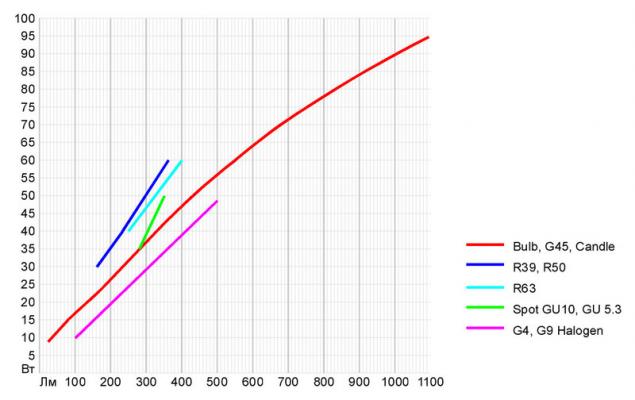
Of course the data is not enough, but it is what it is.
As the equivalent for the reasons described above may not be accurate, I think that on the website it should round up to 5 watts. Perhaps the easiest way would be to create a table with ranges of values of flux for each equivalent of each type of lamps. published
P. S. And remember, only by changing their consumption — together we change the world! ©
Join us in Facebook , Vkontakte, Odnoklassniki
Source: geektimes.ru/company/lamptest/blog/271470/

For ordinary light-pears manufacturers specify the equivalent of 60 watts with the values of flux: 450, 500, 510, 525, 530, 540, 560, 570, 580, 600, 620, 630, 650, 680, 700, 720, 807 LM. A good run is almost two times!
For "candles" is still fun. Manufacturers specify the equivalent of 40 watts for the light flux from 250 to 480 LM.
If you take, for example, a luminous flux of 470 LM, you can see that different manufacturers specify for him the equivalent of 40, 45, 60 or 75 watts.
Notice that it is not measured value, but the data that manufacturers of lead on the packaging of lamps.
So where is the truth? And what is the line flux, and equivalent is true?
It would seem a simple task is not simple. I measured the parameters of several tens of filament lamps and came to the following conclusions:
1. The luminous flux of incandescent lamps is highly dependent on voltage. For example, OSRAM lamp 60 W 710 LM gives specified on its packaging, at a voltage of 230 V and at a voltage of 220 V it only gives 616 LM.
2. The vast majority of incandescent lamps of all brands even at nominal voltage 230 V give a considerably lower luminous flux than indicated by the manufacturer. For example, lamp GE Classic A50/60W-230V-F-E27 At 230V gives a total of 556 LM, and Philips A55 frosted E27 ES 60W 230V — 614 LM, although both lamps specified luminous flux 710 LM.
3. The dependence of light output on the power consumption is very different in different types of lamps. For pears, candles and bulbs acting the ratio 9-14 LM/W, mirrored lamps R39, R50, R63 6.4-7.7 LM/W, spots GU10 and GU5.3 — 6-9 LM/W, mikrolamp G4 and G9 — 9.2-10.3 LM/W.
4. Across incandescent, working with purecalm. These lamps provide more light than stated but will not last long. They can be easily identified by the color temperature, much higher than stated.
There are several standards for the determination of the equivalent, but they are far from reality. For example, in one of the European standards it is considered that 60 watts is 806 Lumens, that's just not one 60-watt bulb will never give so much light in the real world.
I think the equivalent should be determined based on the conditions as close to real. Standard we have a network of 230 volts, but in most homes the voltage is closer to 220 V. Buying led lamps, we want to replace their incandescent bulbs, which are sold in stores, but not the perfect bulb, giving it as much light as written on the packaging, which buy are unlikely to succeed. Therefore, to determine the equivalents I take the average incandescent lamp (not the worst and not the best values of luminous flux) operating at 220 volts.
I get the following equivalents:
Pears, balls, candles:
15 W — 80 LM
25 W — 180 LM
40 Watt — 330 Lumens
60 Watts — 550 Lumens
75 Watt — 750 Lumens
95 W — 1100 LM
Reflector lamps R39, R50:
30 W — 160 LM
40 Watts — 230 Lumens
60 W 360 LM
Reflector lamps R63:
40 W — 250 LM
60 Watts — 400 Lumens
Spotlights GU10, GU5.3:
35 W — 280 LM
50 Watt — 360 Lumens
Microline halogen G4, G9:
10 W — 100 LM
48 Watt — 500 Lumens

Of course the data is not enough, but it is what it is.
As the equivalent for the reasons described above may not be accurate, I think that on the website it should round up to 5 watts. Perhaps the easiest way would be to create a table with ranges of values of flux for each equivalent of each type of lamps. published
P. S. And remember, only by changing their consumption — together we change the world! ©
Join us in Facebook , Vkontakte, Odnoklassniki
Source: geektimes.ru/company/lamptest/blog/271470/
Lilac: omens and magical properties
Iodine, brilliant green, chalk — perfect protection for the garden from pests and diseases!
